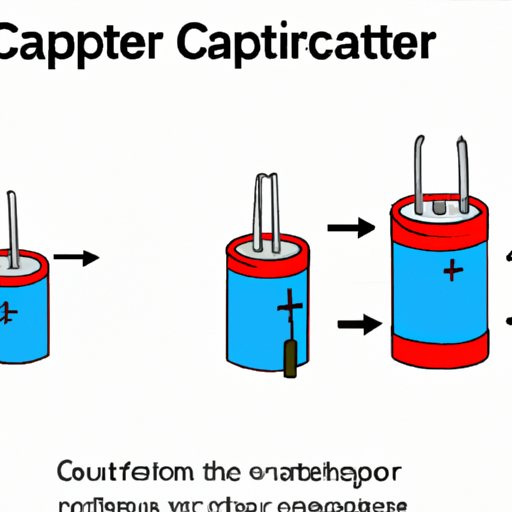An article to help you understand what is the role of a capacitor
Understanding the Role of a Capacitor
I. Introduction
In the world of electronics, capacitors play a crucial role that often goes unnoticed. A capacitor is a passive electronic component that stores electrical energy in an electric field, allowing it to release that energy when needed. This simple yet powerful device is fundamental to the operation of countless electrical and electronic circuits, from the smallest gadgets to large industrial systems. In this article, we will explore the basic principles of capacitors, their various types, functions in circuits, real-world applications, challenges, and future trends in capacitor technology.
II. Basic Principles of Capacitors
A. What is a capacitor?
At its core, a capacitor consists of two conductive plates separated by an insulating material known as a dielectric. When a voltage is applied across the plates, an electric field is created, causing positive and negative charges to accumulate on opposite plates. This process allows the capacitor to store energy, which can be released when the circuit requires it.
B. The physics behind capacitance
Capacitance is defined as the ability of a capacitor to store charge per unit voltage. It is measured in farads (F), with one farad being the capacitance that allows one coulomb of charge to be stored at one volt. Several factors influence capacitance:
1. **Surface Area of the Plates**: Larger plates can store more charge, increasing capacitance.
2. **Distance Between Plates**: Closer plates create a stronger electric field, enhancing capacitance.
3. **Dielectric Material**: Different materials have varying abilities to store electric energy, affecting capacitance.
III. Types of Capacitors
Capacitors come in various types, each with unique characteristics and applications:
A. Electrolytic Capacitors
Electrolytic capacitors are polarized components that offer high capacitance values in a relatively small package. They are commonly used in power supply circuits to smooth out voltage fluctuations.
B. Ceramic Capacitors
Ceramic capacitors are non-polarized and known for their stability and reliability. They are widely used in high-frequency applications, such as RF circuits and decoupling applications.
C. Film Capacitors
Film capacitors use a thin plastic film as the dielectric. They are known for their low loss and high stability, making them suitable for audio applications and timing circuits.
D. Tantalum Capacitors
Tantalum capacitors are also polarized and offer high capacitance in a compact size. They are often used in applications where space is limited, such as in mobile devices.
E. Supercapacitors
Supercapacitors, or ultracapacitors, can store much more energy than traditional capacitors. They are used in applications requiring rapid charge and discharge cycles, such as energy storage systems and regenerative braking in electric vehicles.
IV. Functions of Capacitors in Circuits
Capacitors serve several essential functions in electrical circuits:
A. Energy Storage
Capacitors can store energy and release it when needed. In power supply circuits, they help maintain a steady voltage by discharging energy during peak loads.
B. Filtering
Capacitors are crucial in filtering applications, smoothing out voltage fluctuations. They are commonly used in power supply filters to eliminate noise and in audio circuits to enhance sound quality.
C. Timing
In timing circuits, capacitors work alongside resistors to create time delays. This principle is utilized in oscillators and timers, which are essential in various electronic devices.
D. Coupling and Decoupling
Capacitors are used for coupling and decoupling signals in amplifiers and communication systems. They allow AC signals to pass while blocking DC components, ensuring signal integrity.
V. Capacitors in Real-World Applications
Capacitors are ubiquitous in modern technology, with applications spanning various industries:
A. Consumer Electronics
In smartphones, computers, and televisions, capacitors help manage power supply stability, enhance audio quality, and improve overall performance.
B. Industrial Applications
Capacitors are vital in motors, power systems, and automation. They help regulate voltage and improve the efficiency of industrial machinery.
C. Renewable Energy Systems
In solar inverters and wind turbines, capacitors play a crucial role in energy storage and management, helping to convert and stabilize energy for use in the grid.
D. Automotive Applications
In electric vehicles and advanced driver-assistance systems (ADAS), capacitors are used for energy storage, power management, and signal processing, contributing to the overall efficiency and safety of modern vehicles.
VI. Challenges and Considerations
While capacitors are essential components, they come with limitations:
A. Limitations of Capacitors
1. **Voltage Ratings and Breakdown**: Each capacitor has a maximum voltage rating. Exceeding this can lead to breakdown and failure.
2. **Temperature Sensitivity**: Capacitors can be sensitive to temperature changes, affecting their performance and lifespan.
B. Aging and Reliability
Capacitors can degrade over time due to factors such as temperature, voltage stress, and environmental conditions. Proper selection and maintenance are crucial to ensure reliability and longevity.
VII. Future Trends in Capacitor Technology
The field of capacitor technology is evolving rapidly, with several exciting trends on the horizon:
A. Advances in Materials and Design
Researchers are exploring new materials and designs to enhance capacitor performance, including the use of nanomaterials and advanced dielectrics.
B. Emerging Applications in Energy Storage and Electronics
As the demand for energy storage solutions grows, capacitors are being integrated into new applications, such as electric vehicles and renewable energy systems.
C. The Role of Capacitors in the Transition to Sustainable Energy
Capacitors will play a vital role in the transition to sustainable energy, helping to stabilize power grids and improve the efficiency of renewable energy systems.
VIII. Conclusion
Capacitors are fundamental components in electrical and electronic circuits, serving various essential functions that enhance performance and reliability. From energy storage to filtering and timing, their versatility makes them indispensable in modern technology. As we continue to innovate and explore new applications, understanding the role of capacitors will be crucial for anyone interested in electronics and electrical engineering. We encourage further exploration and understanding of these remarkable devices, as they will undoubtedly play a significant role in shaping the future of technology.
IX. References
For those interested in delving deeper into the world of capacitors, consider exploring the following resources:
1. "Capacitors: Principles and Applications" by John Smith
2. "The Art of Electronics" by Paul Horowitz and Winfield Hill
3. IEEE Journals on capacitor technology and applications
4. Online courses and tutorials on electronics fundamentals
By understanding capacitors, we can appreciate their vital role in the technology that surrounds us every day.







